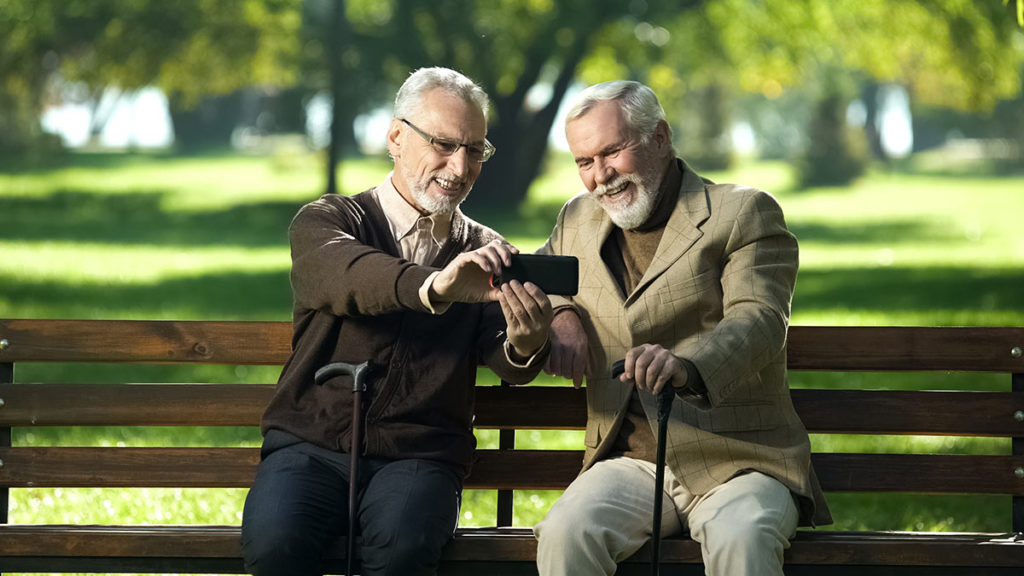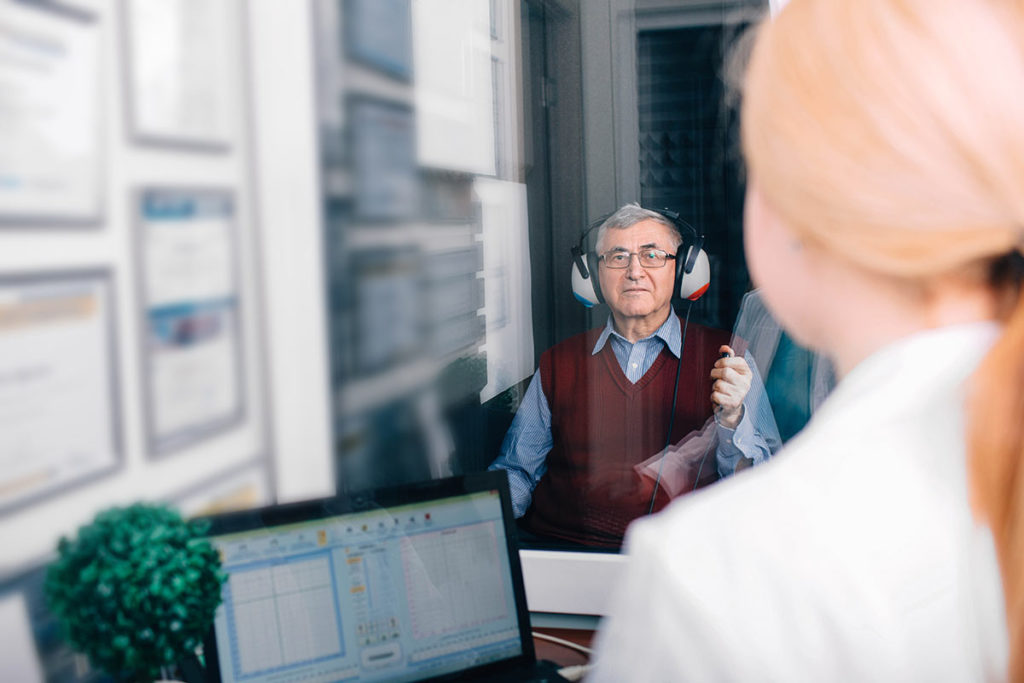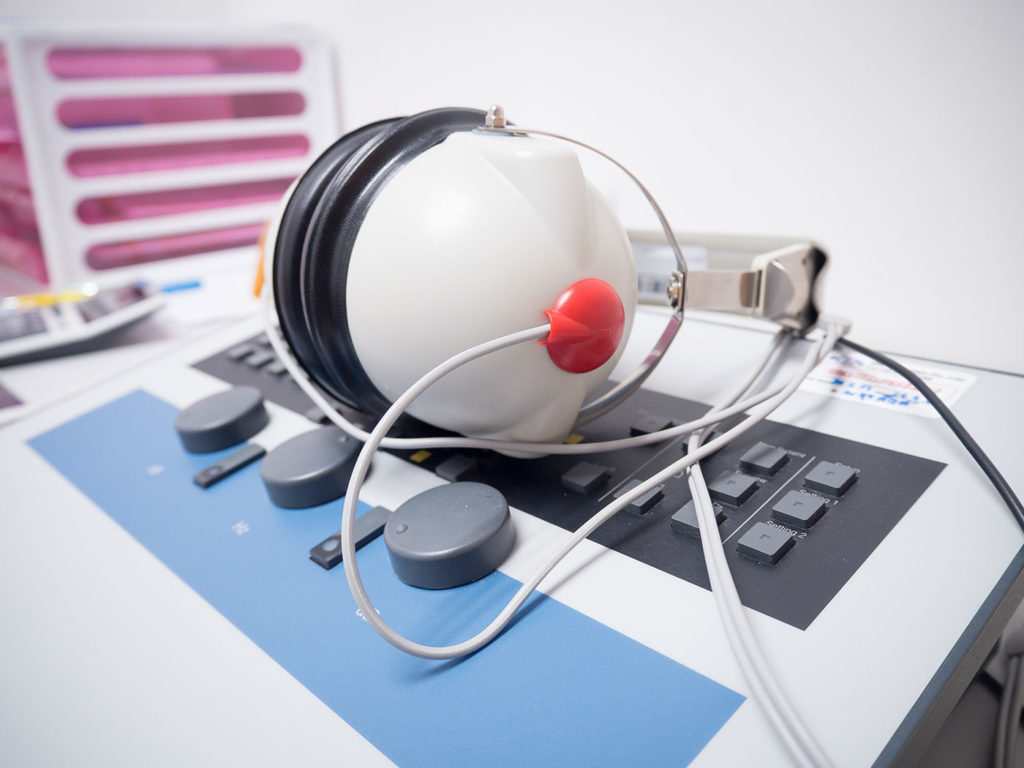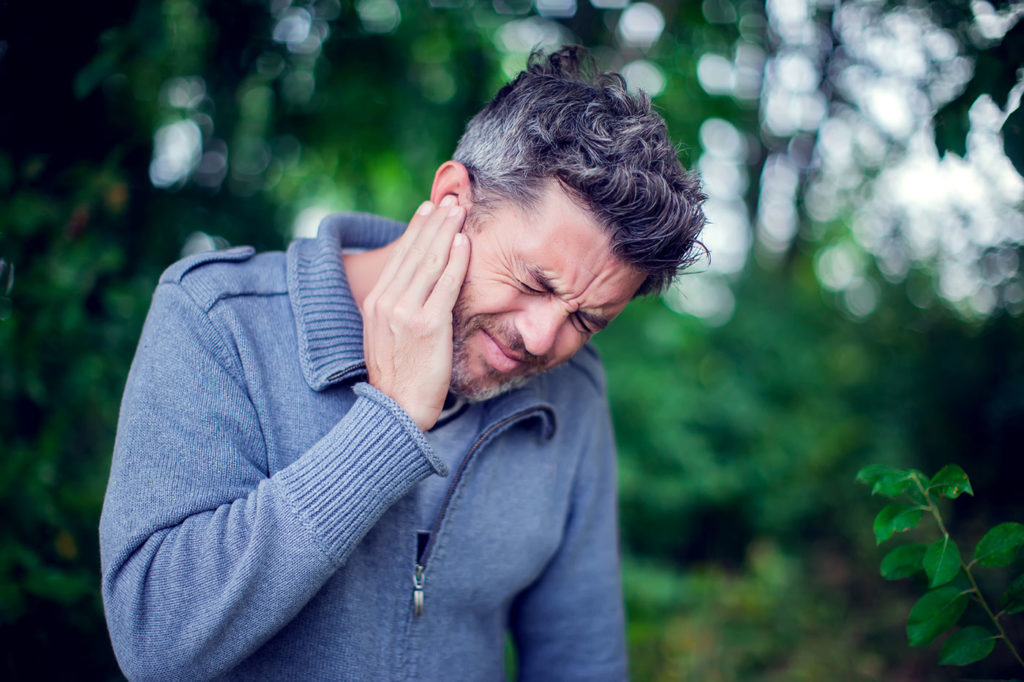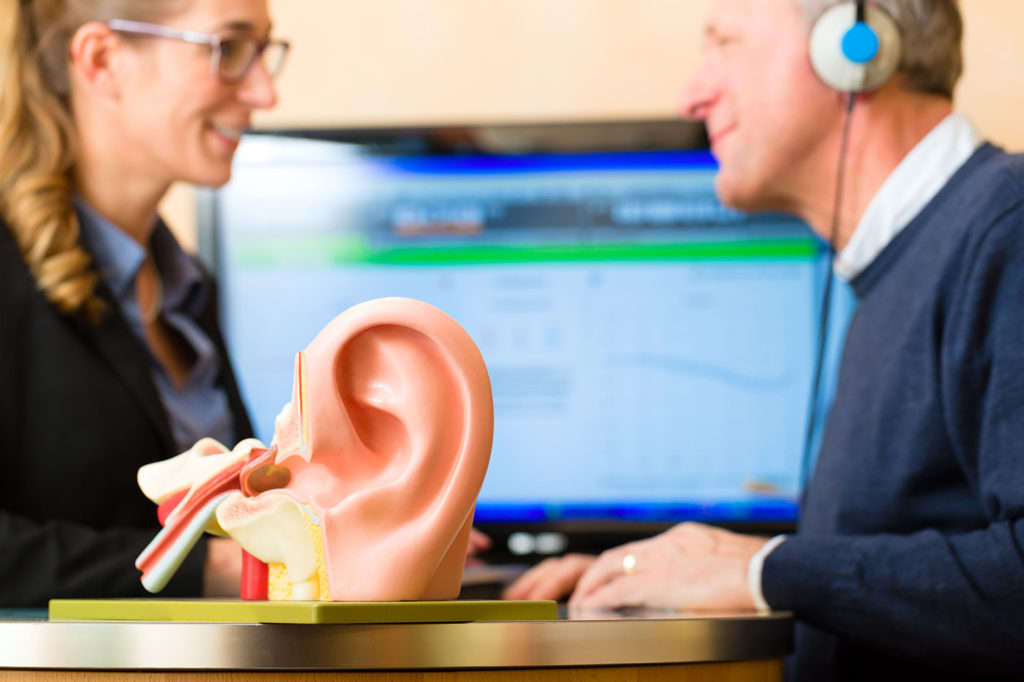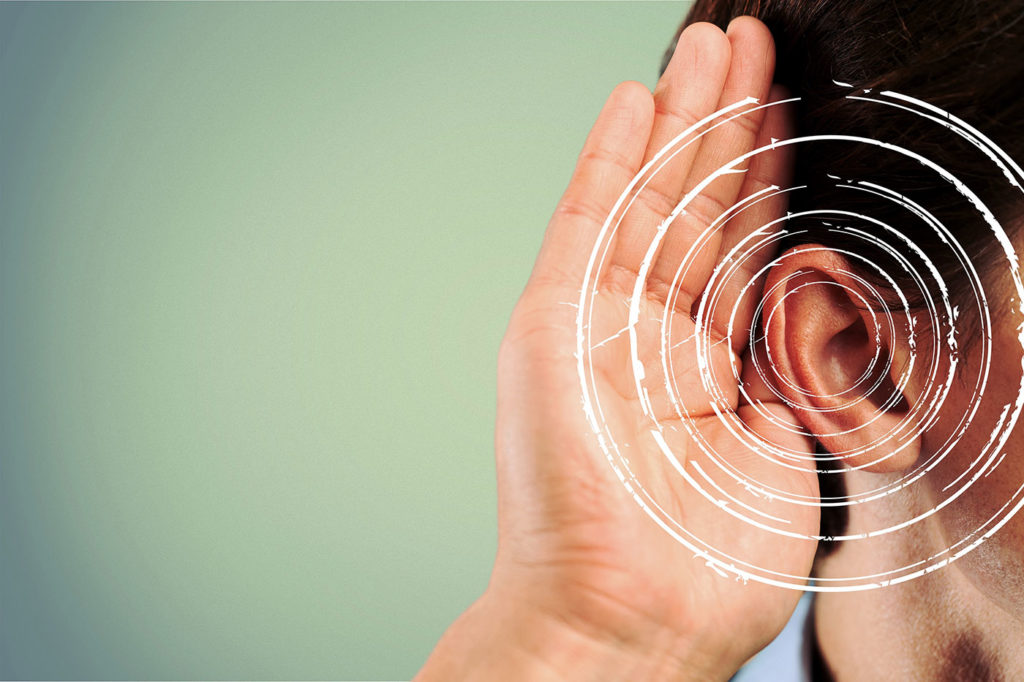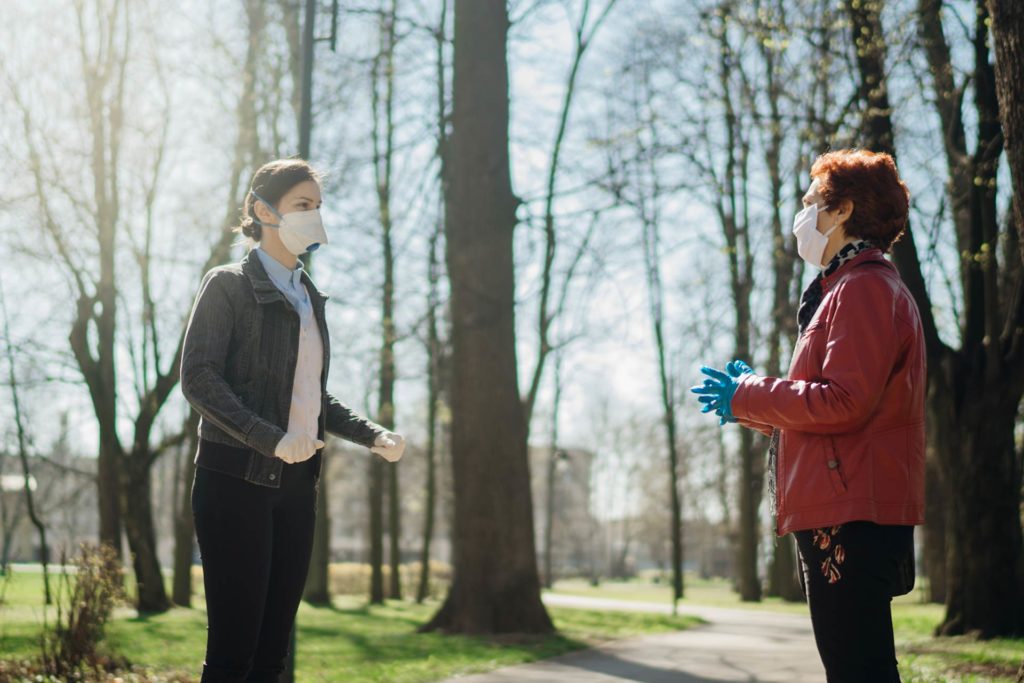You may have heard the slogan that Better hearing is better living. It does have a catchy sound to it, but there is more to sayings like this than smooth sounding marketing phrases. What is hearing, especially for those who grew up with good hearing? With normal hearing levels, children at six years of age […]
Do I Need an Annual Hearing Test?
Most adults — as part of their health regimen — schedule regular checkups with their doctors, dentists and optometrists. Not only does the need to see medical practitioners tend to increase as we age (this author can vouch for that), it’s good advice to stay ahead of potential issues, too. But what about our hearing? How do […]
Caring for Your Hearing Aids During the Summer
Moisture is the enemy of any type of hearing aids, and summer brings in a wide variety of new ways for moisture to get to yours. Besides added perspiration and danger from humidity damage, summer means swimming or sports for many people. In fact, most summer activities, from sitting at the beach to applying bug […]
Ruthies Story: A Caretakers Perspective
When you oversee caring for your parents, you want to make sure they receive the best care possible. We recently heard a story from Ruthie, a caretaker for her elderly mother, and wanted to share it. Below is her story about finding the best care for her mother and the impact good care had on […]
Understanding the degrees of hearing loss
Contributed by Debbie Clason, staff writer, Healthy HearingLast updated February 24, 2020. edited by Dennis Van Vliet May 25, 2021 In simple terms, the severity of your hearing loss is measured in two ways—how loud something needs to be before you can hear it, and which frequencies are harder for you to hear (such as higher-pitched women’s voices compared to […]
You’re Never Too Cool for Hearing Care
For far too long there has been a perception about hearing loss as being an impairment as well as a stigma around the use of hearing aid technology as being a sign of old age. While it is sadly true that age-related hearing loss may be an impairment, younger individuals suffer from hearing loss due […]
5 Things You Need to Know About Hearing Loss
Think you know everything there is to know about hearing loss? You might be surprised. Here are five facts everyone should know about hearing loss, its effects and its prevalence: 1. Untreated hearing loss can increase your risk for Alzheimer’s disease. It’s easy to understand how hearing problems can have an impact on your ability […]
Noise 24 hours a day
Tinnitus is noises in the head, not related to any psychiatric condition. The noise can be heard anywhere in the head or in one or both ears. Imagine a constant ringing, buzzing or whistling in your ears, 24 hours a day. It is called tinnitus. You never get a break. It is always there. Nobody […]
A Look Behind the Curtain: The Hearing Consultation
It is estimated by the Better Hearing Institute that over 35 million Americans willingly chose to deal with the negative effects from untreated hearing loss in their daily lives. For some, the degree of hearing loss may be more impacting than others, but every person who has difficulty hearing could benefit from a simple hearing […]
How do I know I have hearing loss?
How can I recognize hearing problems? Hearing problems rarely cause discomfort or pain, and because the hearing loss onset is often gradual, it’s common to adapt to hearing loss without realizing it. If you think you might be experiencing hearing loss, ask yourself the following questions: If you answered yes to several of these questions, […]
Is Better Hearing Part of Your Retirement Plan?
You know the drill. You sit down with your financial advisor and discuss your income, savings, spending and everything in between. You have questions for your advisor and they have questions for you, but the most important one on your mind is “will I have enough money set aside to have a fulfilling retirement?” When […]
How Fireworks Affect Your Hearing
Independence Day is near once again, which can only mean one thing: fireworks season is about to kick into high gear. But for as festive and beautiful as fireworks can be, they also pose some significant risks. This is especially true when it comes to hearing-related issues, which is something that older adults are particularly […]
Better Hearing or Better Listening?
Hearing is a critically important sense for typical development of speech and language which carries us through the formative years of learning and socializing so unique to humankind. Loss of hearing can come from illness, heredity, noise exposure, among a variety of other causes. As we mature and approach retirement age, Age Related Hearing Loss […]
Loneliness, Social Isolation and a Pandemic, Oh My!
The worldwide impact of implementation of unprecedented social distancing and limitations on social activities because of the COVID-19 pandemic may have helped control the spread of the disease but impacted older adults disproportionally. In a report from May of last year Hwang and colleagues noted: “…there is a high cost associated with the essential quarantine […]
COVID Linked to Hearing Loss, Tinnitus
Throughout 2020 COVID-19 had us hiding out at home, washing our hands, wiping down surfaces and masking up. Quite a bit wasn’t known for some time. We knew about flu-like symptoms and disturbances in smell and taste, but not enough about the full spectrum of effects. A year later now, evidence is emerging about symptoms of […]
Types of Hearing Loss – What are the Differences?
There are two traditional types of hearing loss: conductive and sensorineural. The classification of each relates to the specific physiological cause. Some cases of hearing loss can involve a combination of the two – what hearing healthcare providers call mixed hearing loss. Recently, a third category called “Hidden Hearing Loss” has been described in peer reviewed […]

